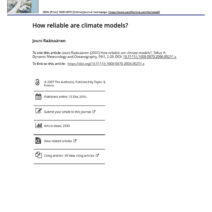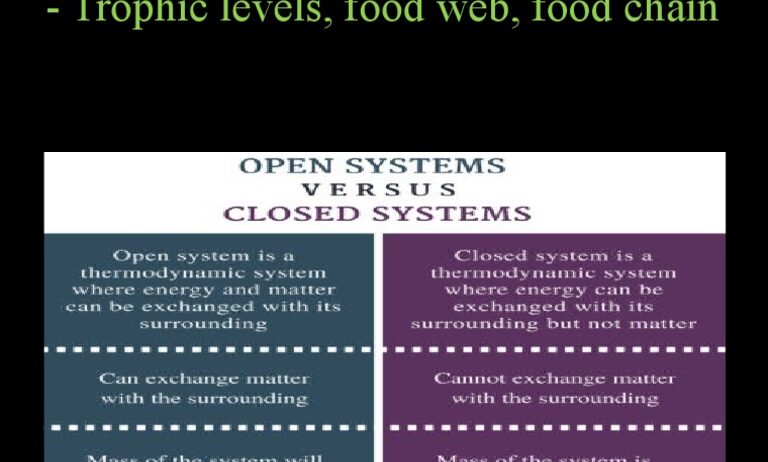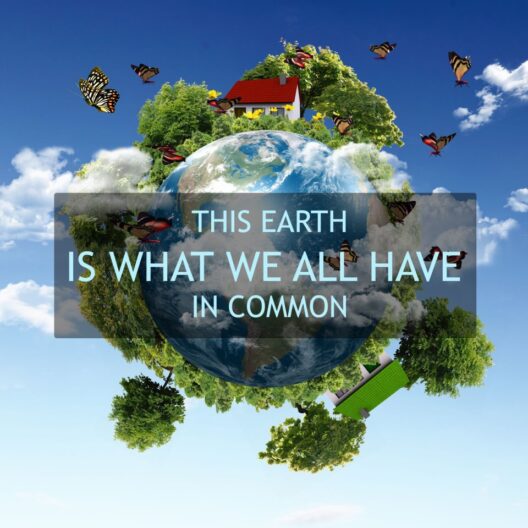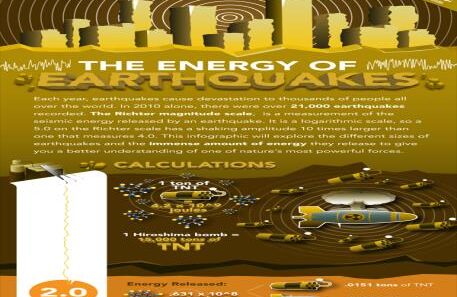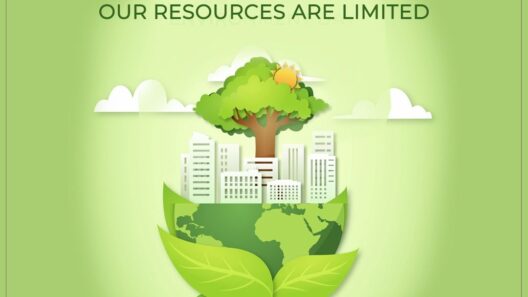Energy conservation is a fundamental concept in ecology that draws a stark contrast between open and closed systems. Understanding how energy is maintained in these divergent systems is crucial for grasping the underlying principles that govern ecological interactions and the sustainability of our environment. This exploration invites curiosity about the mechanisms at play and emphasizes the significance of boundaries in energy flow and ecosystem functioning.
At the outset, it is vital to delineate the characteristics of open and closed systems. An open system can be defined as one that exchanges both energy and matter with its surroundings. This is prevalent in natural ecosystems where external factors, such as sunlight, food availability, and the migration of organisms, can influence the internal dynamics considerably. Conversely, a closed system is characterized by no matter exchange with the environment, although energy can still be transferred. An example of a closed system in nature is a terrarium where the components interact among themselves but do not gain or lose matter from the external environment.
Energy conservation in open systems is largely a dynamic process. Photosynthesis serves as a quintessential example of how energy is captured and utilized within an open system. Plants, through their leaves, absorb sunlight and convert it into chemical energy in the form of glucose. This process not only fuels the growth of the plant but also serves as a foundational energy source for other organisms within the ecosystem, such as herbivores and, subsequently, carnivores. The continuous influx of solar energy allows these systems to maintain a delicate balance and sustain diverse biological interactions.
However, the reliance on external energy inputs introduces complexity. Seasonal changes, climate fluctuations, and anthropogenic impacts can disrupt energy flow, leading to alterations in species dynamics and ecosystem stability. For example, energy conservation in a forest ecosystem depends not only on photosynthetic activity but also on factors such as soil nutrient availability, moisture levels, and biodiversity. The resilience of these systems hinges upon their ability to adapt to changes while still conserving energy efficiently.
In contrast, energy dynamics in closed systems present a different conundrum. With no matter entering or exiting, the energy within these systems is confined, leading to more predictable energy pathways. Energy conservation in a closed system is governed by principles of thermodynamics, particularly the law of conservation of energy, which states that energy cannot be created or destroyed, only transformed. This transformation is critical to the functioning of an ecosystem; in a closed environment, energy would circulate among the organisms, decomposing matter, and organic compounds through processes like respiration and decomposition.
However, the absence of matter exchange restricts species diversity and ecological complexity. Closed systems, like a sealed jar, might support microbial life and simple organisms but often lack the intricate food webs and interactions found in open systems. This limitation can stifle evolutionary processes, resulting in static ecological niches incapable of adapting to environmental changes.
Energy conservation in both systems highlights the significance of boundaries. Boundaries can define the extent of interaction and regulation of energy flow, impacting not only the physical and biological components of an ecosystem but also the broader ecological processes. In open systems, boundaries often signify transitions, such as the borders of a forest or a river delta, where energy influx can support varied biological subsets. In contrast, boundaries in closed systems delineate the limits of energy interactions, maintaining a static equilibrium that may lack the flexibility to respond dynamically to environmental stressors.
The interplay of energy conservation and ecosystem boundaries has profound implications for climate change and conservation efforts. The warming climate poses a threat to open systems, disrupting energy flow and creating unanticipated consequences for biodiversity. As temperature rises, certain species may thrive while others, unable to adapt quickly, decline. This can lead to alterations in food web dynamics with cascading effects throughout the ecosystem. Recognizing the path of energy conservation within these systems underlines the urgency of addressing climate change impacts to maintain biodiversity and ecosystem health.
Conversely, in closed systems where energy conservation relies on recycling existing resources, understanding the limits of these systems is paramount. Interventions, such as bioremediation and sustainable waste management practices, can enhance energy conservation by optimizing the use of resources within closed boundaries. By employing such innovative strategies, the resilience and functionality of closed system environments can be bolstered, ensuring they continue to provide vital ecosystem services.
In sum, the examination of energy conservation in open versus closed systems reveals intricate relationships governed by boundaries and energy dynamics. Open systems, characterized by vibrant exchanges of energy and matter, illustrate the necessity for continuous inputs to maintain ecological balance and resilience. Meanwhile, closed systems, although constrained, reveal profound truths about energy transformations and the cyclical nature of matter in an unchanging environment. Recognizing and protecting these energy pathways allows for a greater understanding of ecological frameworks, equipping us with the knowledge necessary to confront the challenges posed by climate change and to advocate for sustainable environmental stewardship.

